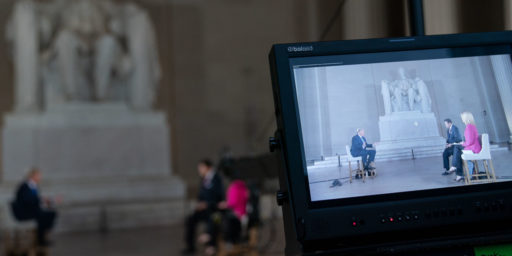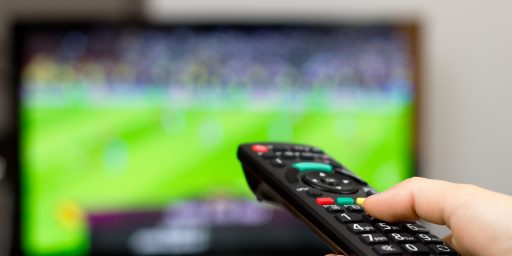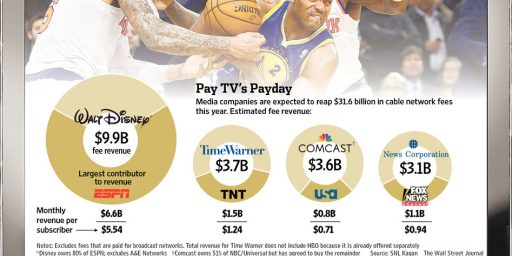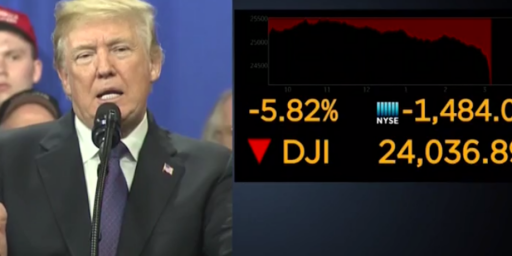More Evidence of Media Bias
A working paper at the National Bureau of Economic Research indicates that the notion of media bias is quite possibly real.
Does media bias affect voting? Over 70 percent of Americans believe that there is either a great deal or a fair amount of media bias in news coverage. Evidence of bias ranges from the topic choices of the New York Times to the choice of think tanks to which the media refer in their broadcasts.
In The Fox News Effect: Media Bias and Voting (NBER Working Paper No. 12169), authors Stefano DellaVigna and Ethan Kaplan address this question by looking at the entry of Fox News into cable markets and its subsequent impact on voting. Between October 1996 and November 2000, the conservative Fox News Channel was introduced into the cable programming of 20 percent of American towns. Using voting data for 9,256 towns, the authors investigate whether Republicans gained vote share in towns where Fox News entered the cable market by the year 2000.
They find that the introduction of Fox News had a small but statistically significant effect on the vote share in Presidential elections between 1996 and 2000. Republicans gained an estimate of between 0.4 and 0.7 percentage points in the towns that broadcast Fox News. They also find that Fox News had a significant effect on Senate vote share and on voter turnout. Their estimates imply that Fox News convinced 3 to 8 percent of its viewers to vote Republican according to a first audience measure, and 11 to 28 percent according to a second, more restrictive audience measure.
Most people, I think, would agree that the Fox News Channel is more to the right than the other news programs on televisions. Further, the fact that the introduction of the Fox News Channel does have a measurable effect on voting behavior argues that there is indeed a media bias. While it is questionable that media bias might influence voting behavior, the converse observation, that the introduction of a news program influences voting behavior points strongly to media bias. This is the second study that I have seen that points to media bias.
The first is this article, published in the Quarterly Journal of Economics (obviously), also points to media bias. Interestingly enough, the Drudge Report comes out as the news entity that is most in line with the political leanings of the general public (according to the measures in the article). This picture shows the distribution of various politicians, news shows, and so forth.

Another interesting part of the research is that if this is true, that media bias also influences voting patterns, then it raises some issues for deregulation of the media markets.






In reference to the image – is it saying that the Wall Street Journal is more liberal than the New York Times? That The Newshour is more conservative than Drudge?
I think they are referring to the Wall Street Journal as a whole, not its editorial page which is decidely conservative. Hell, even the NY Times has some conservative editorial writers.
I am going to need to read the report in detail. One thing I find interesting is in the positioning of the different news sources relative to the average democrat, republican and US voter.
All but Washington times and Fox news is to the left of the average US voter. And all but the WSJ is to the right of the average democrat. And all are to the left of the average republican.
Assuming these are accurate, it helps to understand why both the left and the right talk about news bias. From their perspective, both are right. Of course for the right, it is even more true as the tilt in percentages and in number of sources is definitely to the left.
No posit that there really is a shift when Fox news becomes available. Note that Fox news is slightly more liberal than Susan Collins. If one news source can have that much impact, then what would the impact be from all the other left leaning news sources? Also note that on this 0 to 100 scale, Fox is about 10% to the right of the average US voter ’95-’99. Only three news sources are inside of that 10% range on the left. 15 news sources are at a greater distance from the average US voter, most around a 15 point difference, but up to a 35 point difference.
The MSM wasn’t woofing when they said that their being in the tank for the democrats meant a 5 to 15 point swing towards the democrats.
Fox has staked out the classic marketing location. 40% of the people are going to think there a little liberal, but better than all the rest. So they get to draw from 40% of the population vs the others (ABC, NBC, CBS, CNN, PBS) looking a lot alike and splitting the other 60%.
I don’t know which is funnier. That Fox is to the left of Collins or that CBS is to the right of Kennedy.